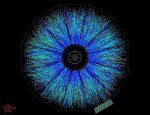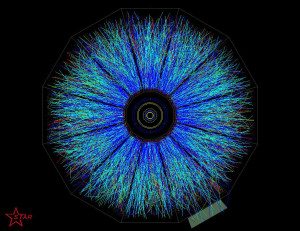I grew weary decades ago of the tiresome claims of new age non-scientist novelists that ancient spiritual masters knew all about the implications of quantum mechanics long before 20th Century physicists.
Sure, the ancients may have said that all life is somehow interconnected and that the independent self is an illusion, but that is a far cry from building lasers, transistors and functional magnetic resonance imaging machines. Broad, vague statements based on intuition certainly have far less utility than solid, hard-earned knowledge.
But a growing number of 21st Century physicists are rebelling against the “no-nothing” stand of the Copenhagen interpretation that says: “Ignore the quantum weirdness; it only applies to small things and we only need to use quantum mechanics for calculations anyway. ”
The problem is that it doesn’t apply to small things only; all big things are made of small things and quantum mechanics has no size limitation. And things happen in the quantum world that seem utterly impossible in the real world. It even challenges what it means to be real.
So the weird discovery that a photon is a particle and a wave at the same time, and that it chooses which to be dependent upon which test instrumentation it encounters, is being swept under the rug by fewer and fewer modern day physicists. See Physics Encounters Consciousness: Quantum Enigma by Bruce Rosenblum and Fred Kuttner.
The same can be said of the other weird discoveries such as one item being in two different places at the same time, effects preceding causes, and information traveling instantaneously, grossly violating the universal speed limit of the speed of light, turning that speed into a relative stand still. And that nothing exists at the quantum level until it is observed, i.e., that the act of observation creates that which is observed.
That’s why Einstein said to Neils Bohr: The moon isn’t there if I’m not looking at it?
Guess what’s really happening, in my humble opinion? Physicists have placed the sense desire world, the first world, the only one with which we are familiar, under such intense scrutiny (think atom smashers) that they have seen clear through it. They are encountering the world of form which is the second of the three worlds. The common sense rules of the first world have no relationship to the rules of the second world.
(Classical Buddhism holds that there are three worlds. The first world of sense desire, the second world of form and the third world of formlessness. Each world represents a level of consciousness or awareness. The “highest” world, that of formlessness, is still “lower” than Nirvana).
A physicist in 2007 said that “physics is bumping up against human consciousness” because the act of conscious observation plays such a huge role in quantum mechanics.
I say he or she was wrong, but amazingly close to the truth. Physics is bumping up against the second world and to that extent the ancients were ahead of their time. This world of sense desire is not the only world, and the other worlds are queerer than we can imagine.
The second world is no longer a mere belief, something that we read about in the Buddhist sutras. It has been bumped up against. And we practitioners of the Buddha Dharma know how we enter into the second world: By means of the jhanas.
“If all thought objects disappear, the thinking subject drops away.
For things are things because of mind, and mind is mind because of things…”
–from the Hsin Hsin Ming, written by Chinese Taoist (Daoist) and Zen master Sengcan, died a.d. 606.
If things are things because of mind, perhaps the moon is created by its observation…in the second world.
“For here there is no yesterday, no tomorrow, no today.”
–the concluding line of the Hsin Hsin Ming.
That sure sounds like the second world alright.
Perhaps the time is not far off when physicists, freed from the Copenhagen interpretation, announce that they have found another world.
They already have. They just don’t know it yet.

